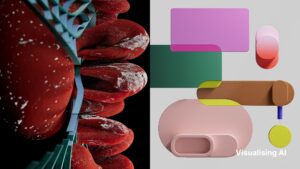Image dataset in deep learning: Top Image Datasets for AI Applications
Introduction to deep learning and image datasets
In the vast field of artificial intelligence (AI), deep learning has emerged as a powerful technique for solving complex problems. Deep learning algorithms, inspired by the neural networks in the human brain, have shown remarkable capabilities in various domains, including image recognition, natural language processing, and speech recognition. However, the success of deep learning models heavily relies on the availability of high-quality and diverse datasets. Among these datasets, image datasets play a crucial role in training and fine-tuning deep learning models.
Importance of image dataset in deep learning
Image datasets serve as the backbone for training deep learning models in image recognition tasks. These datasets consist of a large number of labeled images, which provide the necessary input for the model to learn and make accurate predictions. The more diverse and comprehensive the image dataset, the better the model’s ability to generalize and make accurate predictions on unseen data.
Furthermore, image datasets allow researchers and developers to benchmark and compare different deep learning models. By using the same image dataset, researchers can measure the performance of their models against others, fostering healthy competition and driving advancements in the field.
Popular image datasets for AI applications
MNIST dataset
The MNIST dataset is a widely recognized benchmark dataset in the field of deep learning. It consists of 60,000 handwritten digit images for training and 10,000 images for testing. The MNIST dataset serves as a starting point for many deep learning enthusiasts and researchers due to its simplicity and accessibility. Although it is a grayscale dataset, it provides a solid foundation for understanding the basics of deep learning and image recognition.
CIFAR-10 dataset
The CIFAR-10 dataset is another popular choice for training deep learning models, particularly in computer vision tasks. It comprises 60,000 color images, each belonging to one of ten classes, such as airplanes, automobiles, and cats. The CIFAR-10 dataset is more challenging than MNIST as it introduces color images and a wider variety of object classes. It is often used to evaluate the performance of deep learning models in real-world scenarios.
ImageNet dataset
The ImageNet dataset is one of the largest mage dataset in deep learning It contains over 14 million labeled images, covering a wide range of object categories. The ImageNet dataset played a significant role in the development of convolutional neural networks (CNNs), a type of deep learning model that has revolutionized image recognition. Many state-of-the-art deep learning models have been trained on ImageNet, making it an essential resource for researchers and developers.
COCO dataset
The COCO (Common Objects in Context) dataset is a comprehensive dataset that includes object detection, segmentation, and captioning annotations. It consists of over 200,000 labeled images, covering 80 different object categories. The COCO dataset is widely used for training deep learning models in tasks such as object detection, instance segmentation, and image captioning. It provides a rich and diverse set of images that can challenge the capabilities of deep learning algorithms.
Open Images dataset
The Open Images dataset is a large-scale image dataset that contains over 9 million images, annotated with bounding boxes and other metadata. It covers a wide range of object categories and provides a valuable resource for training deep learning models in various computer vision tasks. The Open Images dataset is particularly useful for object detection and localization, as it provides precise annotations for object boundaries.

How to access and use image datasets
Accessing and using iImage dataset in deep learning can be a straightforward process. Many popular image datasets, such as MNIST and CIFAR-10, are freely available and can be downloaded from their respective websites. Other datasets, like ImageNet and COCO, may require registration and agreement to certain terms and conditions.
Once downloaded, image datasets can be loaded into Image dataset in deep learning frameworks, such as TensorFlow or PyTorch, using appropriate data loading libraries. These frameworks provide convenient functions for preprocessing and augmenting image datasets, which can enhance the performance and generalization capabilities of deep learning models.
Preprocessing techniques for image datasets in deep learning
Preprocessing image datasets is a critical step in preparing them for deep learning tasks. Several preprocessing techniques can be applied to enhance the quality and diversity of the dataset.
One common preprocessing technique is data augmentation, which involves generating additional training samples by applying various transformations to the original images. These transformations can include random rotations, translations, and flips, simulating different viewpoints and conditions. Data augmentation helps prevent overfitting and improves the model’s ability to generalize to unseen data.
Another important preprocessing step is normalization, which scales the pixel values of the images to a common range. This ensures that the input to the deep learning model is consistent and prevents any bias caused by differences in pixel intensity.
Tips for maximizing the potential of image datasets in deep learning
To maximize the potential of Image dataset in deep learning, consider the following tips:
- Diversify the dataset: Include images from a wide range of sources and perspectives to expose the model to various scenarios and challenges.
- Balance the classes: Ensure that the dataset contains a balanced representation of each object class to avoid biases and improve the model’s performance on all classes.
- Regularly update the dataset: As new data becomes available, augment the existing dataset to incorporate the latest trends and changes.
- Leverage transfer learning: If a pre-trained deep learning model exists for a similar task, use it as a starting point and fine-tune it on the target dataset. This can save training time and improve accuracy.
By following these tips, you can harness the full potential of image datasets and achieve better results in your deep learning applications.
Conclusion
In conclusion, image datasets are a vital component in maximizing the potential of Image dataset in deep learning models for AI applications. They provide the necessary training data for the models to learn and make accurate predictions. From benchmark datasets like MNIST and CIFAR-10 to large-scale datasets like ImageNet and COCO, there are various options available to cater to different deep learning tasks. By accessing and using these datasets, employing appropriate preprocessing techniques, and following best practices, researchers and developers can unlock the full power of deep learning in image recognition and other computer vision tasks.
So, if you are looking to take your Image dataset in deep learning to new heights, make sure to explore and utilize the top image datasets available. With the right dataset, preprocessing techniques, and tips in mind, you can push the boundaries of AI applications and make significant contributions to the field of deep learning.

